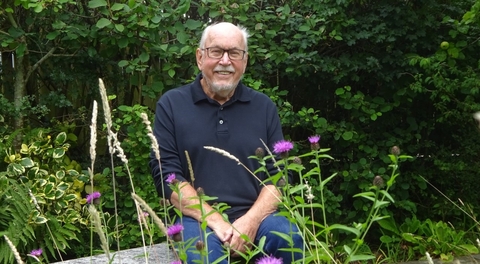
David Humphreys
'The first year we saw one orchid. Last year, there were four species of orchid and over 200 common orchids in what used to be a lawn.'
David Humphreys
Determined to do his bit to counteract biodiversity decline through loss of habitat, David and his wife started to manage their garden for nature. Now, an astonishing variety of flora and fauna live there, from bats to orchids to birds of prey! Here's more from David:
'Twenty years ago, my wife, Barbara, and I noticed the gradual loss of local natural habitat to suburban gardens, exotic plants and shrubs. Determined to act, we decided to leave areas of our garden to nature, with minimal management, and waited to find out what is not eaten by the local deer.
Native hedges, shrubs, plants, ferns, lichens and grasses were encouraged. We created three ponds to increase environmental diversity, and these attracted blue and red damsel flies within hours.
Since then, we've seen hedgehogs, foxes, voles, shrews and a weasel. Slow worms, toads, frogs and two species of newt are widespread. We have a bat roost and a succession of various colourful native flowers throughout the spring and summer, including Wordsworth’s daffodils.
The first year we saw one orchid. Last year, there were four species of orchid and over 200 common orchids in what used to be a lawn. These attract bees, moths, butterflies and lacewings. Roe deer spend nights in the garden and this year, twins were born there. We have unusual ferns and lichens.
Buzzards have landed in the trees, Sparrowhawks and a multitude of finches, tits, woodpeckers, nuthatches, tree creepers, owls and the usual suspects abound. It has given us enormous pleasure and we feel living amongst so many beautiful species is a privilege.
To anyone who wants to do it themselves I would say that scale does not matter. Get a pond in, decide where your nettle patch and native ‘meadow’ will be (you will only need to cut it annually!), and leave quiet areas and cover. Build a drystone structure with holes for nests and dens. Keep an area pet free if you can.
Do not be discouraged – it's a long term project and the number of species present seems to increase exponentially after a year or two. You will have a wildlife rich garden, unmanicured maybe, but not untidy and a magnet for an astonishing variety of flora and fauna.'
Ways to take action for nature at home
